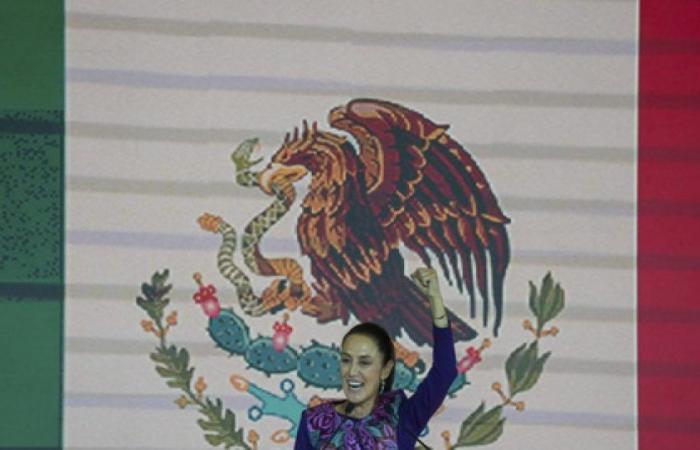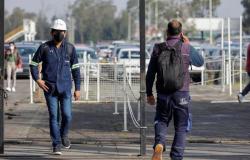
Andrea Bussoletti, University of Guadalajara
On June 2, for the first time, a woman, Claudia Sheinbaum Pardo, won the presidential elections in Mexico. Known for her political career within the capital’s left since the eighties of the last century, Sheinbaum is also characterized by her profile and academic itinerary.
The newly elected president is a researcher at UNAM and in various publications she has dedicated herself to issues related to the environment and mitigation and adaptation to climate change. This dimension deserves deeper reflection, trying to anticipate the possible evolution of the 2024-2030 six-year period.
Military, lawyers and economists
In the political history of post-revolutionary Mexico, scholars of the “hard” sciences have regularly joined presidential cabinets but without exercising the political leadership of governments.
Two stages can be distinguished. A first, which begins with the Presidency of Álvaro Obregón and concludes with that of Ávila Camacho. In this period, military figures prevail at the head of the Government. The second, from Miguel Alemán to López Obrador, saw the affirmation of civil leadership.
Within this second stage, a large majority of presidents with training in law stands out and, starting in the 1980s, an increase in the number of presidents with studies in economics.
Throughout an entire century there is only one precedent of a president with studies in what today we call “hard” sciences and which for a time, with a pinch of arrogance, used to be called “exact.” This is Pascual Ortiz Rubio, who trained in engineering. But Ortiz Rubio, from a young age, began to dedicate himself to political activity and, although he managed to complete his studies, he preferred to practice entirely within this field.
Angela Merkel’s background
The presence of a scientist at the head of the country’s Government is a novelty for Mexico, but not for the world. The most transcendent figure in this sense has been Angela Merkel, absolute protagonist of German and European political life for almost two decades at the beginning of the 21st century.
Merkel, a doctor in quantum chemistry, worked for several years as a scientific collaborator at the Central Institute of Physical Chemistry of the Academy of Sciences of the former East Germany. Her entry into politics did not take place until after the fall of the Berlin Wall.
The comparison between the two trajectories does not seem like an occurrence. On many occasions throughout the recently concluded presidential election, Sheinbaum seemed to be inspired by the former German chancellor’s communication style, avoiding excesses to project an image of seriousness and professionalism. Something that did not seem like a mere imitation, but rather the reflection of a similar training in a field where the use of reason is revealed to be more important than verbal and oratorical abilities.
Many analysts are concerned that Sheinbaum does not have autonomy and his presidency is conditioned by the influence of his predecessor, López Obrador. It is a pessimistic hypothesis that only facts can validate or refute. If Sheinbaum is inspired by the figure of Merkel, it is very likely that he keeps in mind how the former German chancellor knew how to break with her political mentor, Helmut Kohl, when the latter was the subject of judicial investigations due to corruption cases.
This feature of the president-elect’s profile may be the key to the break with the past, after an electoral process where a tendency towards continuity prevailed, with Morena repeating her victory. The ruling coalition has emerged strengthened and has a qualified majority in the Chamber of Deputies and a slim majority in the Senate.
Tension between Government and academic institutions
AMLO’s six-year term has been a complex period for universities and for academic research in general. The constant threats of radical interventions in the main organization for the promotion of science, Conacyt, resulted in a modification of its name, which was renamed Conahcyt (National Council of Humanities, Sciences and Technologies). This transformation affected the form more than the substance.
Another chapter of this disagreement has to do with the government’s action against the Center for Economic Research and Teaching (CIDE), a public research institute.
Without forgetting the frequent controversies between the cabinet and several university institutions, including the two main public universities in the country, UNAM and UDG. The cuts to the budget that the federation allocated to higher education institutions show the tense relationship.
A latent conflict between a government hostile to any form of control by other institutions and an academic world, which in turn, experiences tensions from within, with an academic staff divided between defenders and critics of the Fourth Transformation promoted by López Obrador and Sheinbaum.
While no one has the crystal sphere and the ability to anticipate future events, it seems unlikely that Sheinbaum will replicate the narrative of the confrontation between the “common sense” of the good and wise people and the university elite, described as a golden bureaucracy, privileged and completely separated from the reality of the country.
Sheinbaum will almost certainly replicate (having already made it in the campaign) the Obrador arguments against the traditional parties and perhaps some other independent authority, such as the National Electoral Institute (INE), the Local Public Bodies (OPLEs) and the Supreme Court. But one can imagine a less tense and more collaborative relationship between it and the academic world. There may be controversial situations from time to time, but everything seems to indicate that, while during AMLO’s six-year term these represented a constant, from now on they will become an exception.
Opportunity for the country
In this sense, the response of the academic community itself to the renewed scenario will also be important. A community called to rethink itself and the country.
In the last forty years, the hegemony of the business world has meant that the priorities of businessmen are considered to be those of an entire country. Perspective that can now be put into discussion.
Science and research have a great opportunity to grow and help the country grow. A scenario that both the research president and academics in universities and research centers are called upon not to waste.
Andrea Bussoletti, Professor of Political Science, University of Guadalajara
This article was originally published on The Conversation. Read the original.





